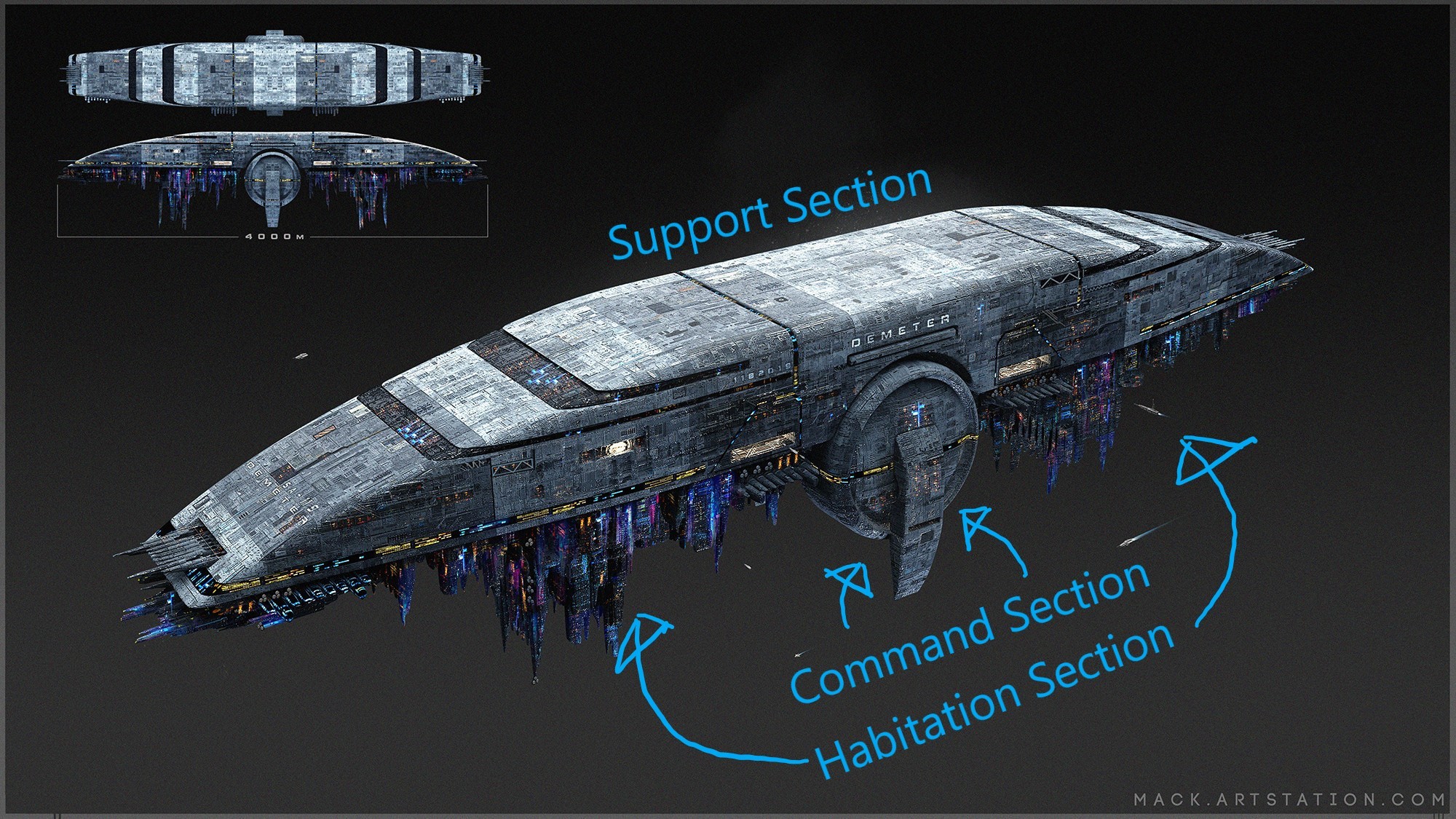AMCO
I'm Sorry Dave


OUT OF CHARACTER INFORMATION
Olympus-class Orbital Arcologies are monolithic 'space cities' typically designed to cater to the affluent with glittering voidscrapers, promenades full of exclusive stores, and space-consuming recreational facilities. The design is modular enough to be used for denser, more middle-class housing.
While one would think that the rich need the poor nearby, so as to do various menial tasks, Globex is far too progressive for such silliness. Instead, legions of unpaid and uncomplaining droids tend to their masters' every need while keeping the stations in tip-top shape. It is not uncommon for an orbital arcology to house several times as many droids as organics - publically-owned droids are often ordered around by a central AI.
The voidscrapers for which orbital arcologies are famous are in many ways comparable to planetside skyscrapers, but are more likely to be used for housing purposes; it is rarer for orbital arcology residents to commute 'up' to the voidscrapers for work, though it is certainly not unheard of.
Orbital arcologies often have two gravity planes, flipping in the middle so that both 'up' and 'down' are 'up'.
- Intent: Self-sufficient space cities for desirable locations with undesirable or overpopulated planetary surfaces.
- Image Source: High Orbit Station SA - 119 "DEMETER" by Mack Sztaba
- Canon Link: N/A
- Permissions: N/A
- Primary Source: Vulcan-class Utility Station, Eden-class Astral Habitat, Paragon-class Defence Platform.
- Manufacturer: The Globex Corporation
- Affiliation: The Globex Corporation
- Market Status: Open-Market
- Model: Olympus-class Orbital Arcology
- Production: Limited
- Material: Doonium-Hexalloy.
- Classification: Orbital Arcology
- Length: 4800 metres
- Width: 970 metres
- Height: 1080 metres
- Armament: None
- Defences: Very High
- Hangar Space: Orbital Arcologies have two primary dock complexes and a number of secondary docking bays. The Support Section tends to have at least one processing hub able to send and receive large amounts of materials.
- Manoeuvrability Rating: Very Low
- Speed Rating: Very Low
- Hyperdrive: Class 12
- Orbital Arcologies are outfitted with all the features and facilities one would expect from stations of their size and purpose.
- Orbital Arcologies are generally divided into three distinct parts - the rather unadorned hull of the Support Section, the glittering voidscrapers and dense housing solutions of the Habitation Section, and the data centres, meeting rooms, and polished offices of the Command Section.
- The Support Section hosts the many-layered hydroponics bays, recycling facilities, autofactories, power generators (whether cold fusion reactors or more exotic Voidsiphons), communications stations, and even atomic forges needed to sustain a city among the stars.
- The Habitation Section hosts the domiciles, stores, offices, recreational facilities, hospitals, and more needed to keep a population of hundreds of thousands (or millions, though Globex generally prefers to cater to the affluent instead) in comfort. Dense housing built into the hull can and usually is used to some extent, but orbital arcologies are best known for their voidscrapers, towering spires that extend into the vacuum of space; they are usually between 100-300 metres in 'height', though longer spires are not unheard of.
- It may seem strange that this section is often turned downwards, but the reason is simple - people like watching planets. If the planet it orbits is less than aesthetic, it is entirely possible to just 'turn the station around'. There's no up in space, after all.
- The Command Section holds the data centres, government offices, and security facilities needed to keep an orbital arcology operating smoothly. Most have an AI core housing a Synthetic Intelligence Construct and some even have a prison of their own, though it is far more common for the latter to be housed in a nearby Vulcan or Eden-class station instead if the local population is sizeable enough.
- Most orbital arcologies operated by Globex have a 'Counterintel' office somewhere in the Command Section, where data from all over the station is processed and evaluated; unlike your average secret police, they usually just watch. Patiently.
- Variable; some hold only housing and standard industries, while others are home to high-tech fabrication or entire research institutions.
- Home Among the Stars: Orbital Arcologies are able to house hundreds of thousands (if not millions) in comfort; they can be made entirely self-sufficient, as the Support Section is able to grow food in hydroponics bays and recycle waste into consumables and consumer goods.
- The Price of Comfort: Voidscrapers are a spectacular sight and a popular habitat, but they are more vulnerable than, say, thick walls.
Olympus-class Orbital Arcologies are monolithic 'space cities' typically designed to cater to the affluent with glittering voidscrapers, promenades full of exclusive stores, and space-consuming recreational facilities. The design is modular enough to be used for denser, more middle-class housing.
While one would think that the rich need the poor nearby, so as to do various menial tasks, Globex is far too progressive for such silliness. Instead, legions of unpaid and uncomplaining droids tend to their masters' every need while keeping the stations in tip-top shape. It is not uncommon for an orbital arcology to house several times as many droids as organics - publically-owned droids are often ordered around by a central AI.
The voidscrapers for which orbital arcologies are famous are in many ways comparable to planetside skyscrapers, but are more likely to be used for housing purposes; it is rarer for orbital arcology residents to commute 'up' to the voidscrapers for work, though it is certainly not unheard of.
Orbital arcologies often have two gravity planes, flipping in the middle so that both 'up' and 'down' are 'up'.





